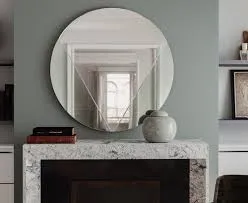

The Allure of White Frosted Glass A Timeless Aesthetic
In the world of interior design and architecture, few materials can rival the versatility and elegance of white frosted glass. This unique material, characterized by its translucent appearance and soft glow, has become increasingly popular in contemporary spaces, merging functionality with a striking aesthetic. White frosted glass not only enhances the beauty of a space but also contributes to privacy and light diffusion, providing a perfect balance in modern design.
The Science Behind Frosted Glass
Frosted glass is created by sandblasting or acid etching clear glass, resulting in a surface that diffuses light while obscuring visibility. This process allows natural light to filter through, creating a bright and airy atmosphere, while also providing privacy. The white coloration of frosted glass is particularly appealing, as it amplifies these qualities, making spaces feel more open and inviting. When strategically used, white frosted glass can transform even the smallest areas into light-filled sanctuaries.
Applications in Interior Design
One of the most popular applications of white frosted glass is in partition walls. In office settings, for instance, frosted glass panels can separate workspaces without the need for solid barriers, maintaining an open environment while providing the necessary confidentiality. In homes, frosted glass can be used in bathroom doors or shower screens, allowing light to permeate the space while ensuring privacy.
Furthermore, white frosted glass is a splendid choice for kitchen and dining areas. It can be incorporated into cabinet doors, adding a modern touch while concealing clutter. The reflection of light on the frosted surface can elevate the overall aesthetic, creating an illusion of larger spaces. Additionally, pendant lights made of white frosted glass are trendsetting features in contemporary designs, emitting a soft, diffused glow that enhances the ambiance.

Exterior Applications and Sustainability
Beyond interiors, white frosted glass also has a role in architectural exteriors. It can be used in windows and facades, contributing to the overall energy efficiency of buildings. Frosted glass effectively reduces glare and controls heat gain, making it a sustainable choice for eco-conscious architecture. The modern, sleek appearance of frosted glass facades can effortlessly distinguish buildings in urban settings, adding to their visual appeal while promoting sustainability.
Psychological Benefits
The psychological impact of design materials like white frosted glass should not be overlooked. The soft lighting it provides can create a calming environment, thereby improving mood and productivity. In spaces such as meditation rooms, wellness centers, or even cozy reading nooks, the gentle diffusion of light contributes to a serene atmosphere that encourages relaxation and focus.
Conclusion A Lasting Trend
As trends in interior design continue to evolve, white frosted glass remains a timeless choice for its balance of beauty and utility. Its ability to harmonize with various styles—from minimalist and modern to traditional—is one of the reasons for its enduring popularity. Whether used in residential or commercial applications, this versatile material transcends aesthetic boundaries, making it an essential element in contemporary design. The charm of white frosted glass lies not only in its physical properties but also in the emotions it evokes and the spaces it transforms. As we embrace a future focused on sustainable and mindful design, white frosted glass is sure to retain its place as a favorite among designers and homeowners alike, blending elegance with practicality in every setting.